Perimenopause is a natural phase that marks the transition from the reproductive years to menopause. During this time, hormone levels fluctuate, leading to various physical and emotional changes. It is a time when self-care becomes crucial as women struggle with symptoms such as hot flashes, mood swings and sleep disturbances. This is where yoga comes in as a powerful ally for women’s health. Yoga offers a holistic approach that supports physical and mental well-being. With its gentle postures, deep breathing and mindfulness practices, yoga helps balance hormones, reduce symptoms, promote relaxation and improve sleep quality. Let us explore how yoga can be a wonderful tool to embrace this transformative phase with grace and vitality.
The Benefits of Yoga for Perimenopause
Balancing hormones and reducing symptoms
Perimenopause brings hormonal fluctuations that can cause a range of uncomfortable symptoms. Yoga offers a natural and gentle way to support hormone balance during this transitional phase. Regular yoga practise has been shown to regulate hormones and relieve symptoms such as hot flashes, mood swings and irritability. Certain yoga postures specifically target the endocrine system, which is responsible for hormone production, helping to restore balance and reduce the intensity of symptoms. By promoting hormonal balance, yoga can bring much-needed relief and improve overall well-being during perimenopause.
Promotes relaxation, stress reduction and improved sleep
Perimenopause can be a time of increased stress and emotional changes. Fortunately, yoga is known for its powerful relaxing and stress-reducing effects. A yoga practise allows you to slow down, focus on your breath and be present in the moment. This mindfulness component helps to calm the mind, reduce anxiety and lower stress levels. As a result, yoga can lead to better quality sleep, which is often disrupted during perimenopause. The combination of gentle movements, deep breathing and mindfulness helps to create a sense of peace and tranquillity, facilitating a restful night’s sleep.
Improves flexibility, strength and overall well-being
As women age, it becomes increasingly important for them to maintain their flexibility and strength. Yoga offers a wonderful way to maintain and improve physical well-being during perimenopause. Through a variety of postures and gentle stretches, yoga improves flexibility, keeps joints mobile and reduces muscle tension. In addition, yoga strengthens the various muscle groups and thus contributes to overall physical stability and balance. Regular practice not only supports physical health, but also promotes mental and emotional well-being. The mind-body connection fostered by yoga cultivates self-awareness, self-acceptance and a positive attitude, leading to an overall sense of well-being.
5 Classic Yoga Poses for Perimenopause
1 # Reclining Bound Angle Pose (Supta Baddha Konasana)
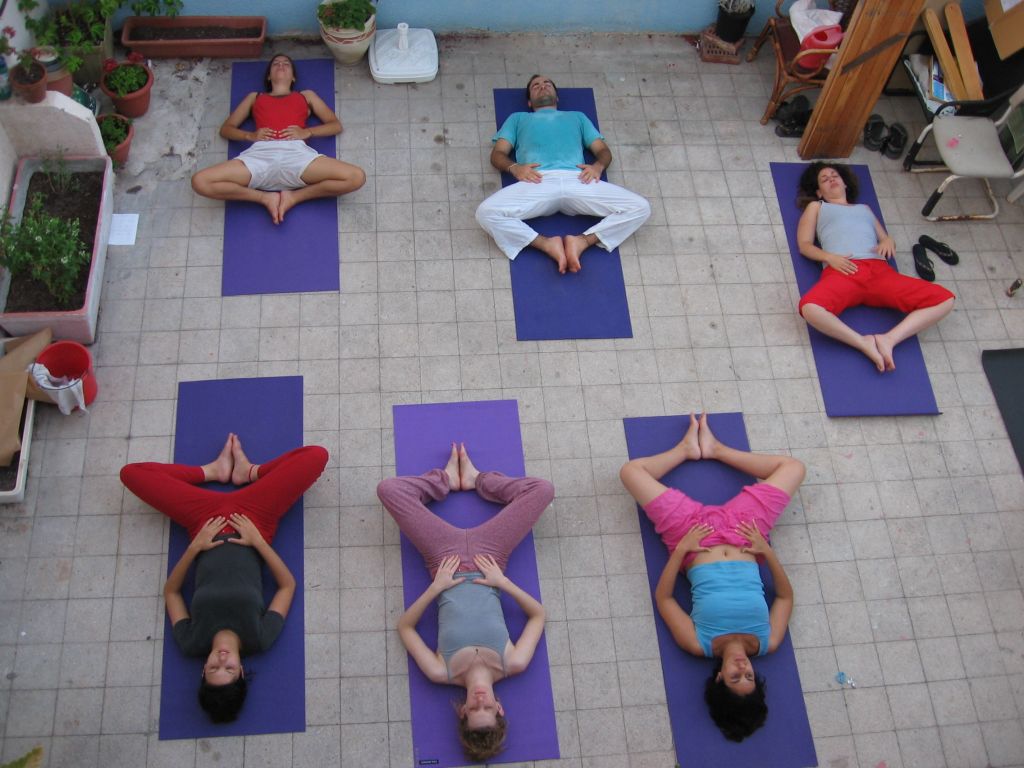
Picture credit – https://commons.wikimedia.org/wiki/File:YogaClass.jpg
Steps of Supta Baddha Konasana-
- Lie flat on your back on a yoga mat or comfortable surface.
- Bend your knees and bring the soles of your feet together, allowing your knees to fall open to the sides.
- Keep your arms relaxed by your sides, palms facing up.
- Adjust your position so that you feel comfortable and supported.
- If desired, you can place yoga blocks or folded blankets under your knees for added support.
- Close your eyes and take slow, deep breaths, allowing your body to relax into the pose.
- Stay in this pose for 5-10 minutes, or as long as it feels comfortable for you.
- To come out of the pose, gently bring your knees together and roll onto one side, using your arm for support. Slowly rise up to a seated position.
Benefits of Reclining Bound Angle Pose (Supta Baddha Konasana)
- Cooling the body and reducing hot flashes
- Promoting relaxation and reducing feelings of discomfort
- Opening the hips and releasing tension
- Calming the mind and promoting a sense of peace
2 # Sphinx Pose (Salamba Bhujangasana)
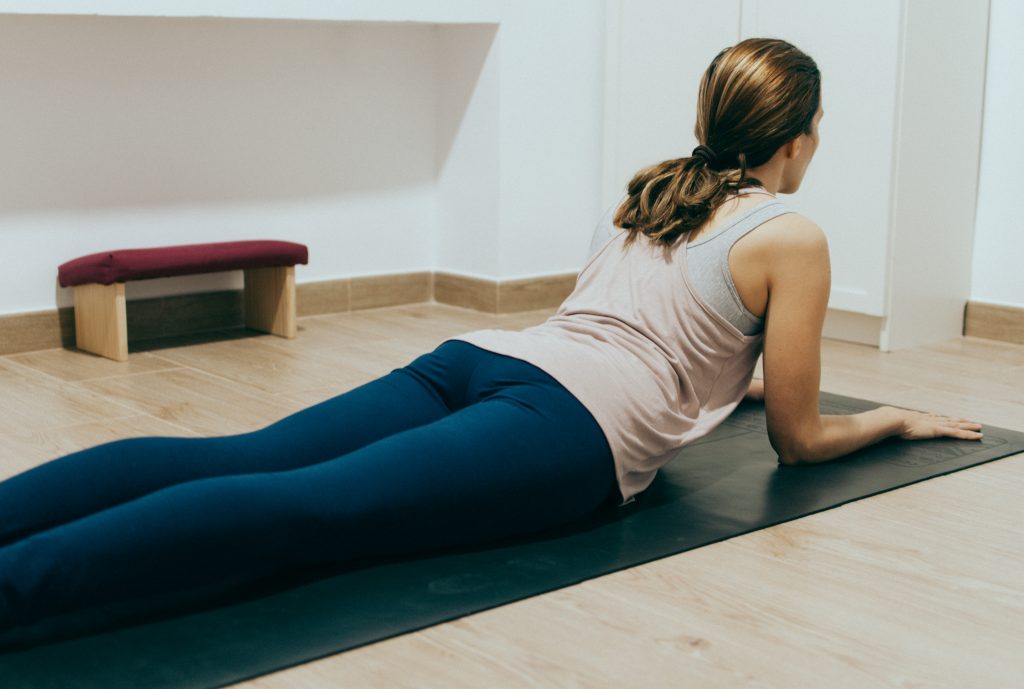
Steps of Salamba Bhujangasana
- Lie on your stomach with your legs extended behind you.
- Place your forearms on the ground, elbows directly under your shoulders.
- Press your forearms and palms firmly into the mat, keeping your upper body relaxed.
- Engage your core muscles and gently lift your chest off the ground, while keeping your hips and legs grounded.
- Lengthen your neck and look straight ahead, avoiding any strain or tension in the neck.
- Take deep breaths, allowing your chest to open and expand with each inhalation.
- Hold the pose for 1-2 minutes, focusing on maintaining a comfortable and steady breath.
- To release, slowly lower your chest back down to the mat, rest your forehead on your hands, and turn your head to one side.
Benefits of Sphinx Pose (Salamba Bhujangasana)
- Boosting energy levels and promoting vitality
- Opening the chest and improving posture
- Strengthening the back muscles
- Stimulating the digestive system and relieving fatigue
Legs Up the Wall Pose (Viparita Karani)
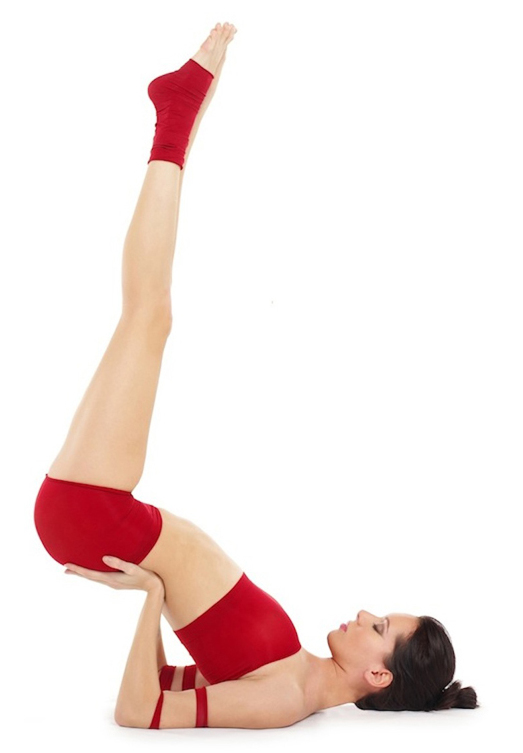
Image – By Kennguru – Own work, CC BY 3.0, https://commons.wikimedia.org/w/index.php?curid=25223503
Steps of Viparita Karani
- Sit with one side of your body against a wall.
- Lie back on the mat and swing your legs up the wall, so that your heels are resting against the wall and your legs are extended vertically.
- Adjust your position so that your hips are comfortably supported by the wall, and your upper body is relaxed on the mat.
- Keep your arms relaxed by your sides, palms facing up.
- Close your eyes and focus on your breath, allowing your body to fully relax into the pose.
- Stay in this pose for 5-15 minutes, enjoying the restorative benefits.
- To come out of the pose, slowly bend your knees, roll onto one side, and use your arms to help yourself sit up.
Benefits of Viparita Karani
- Promoting relaxation and reducing anxiety
- Reversing the effects of gravity, aiding in reducing swelling in the legs and feet
- Activating the parasympathetic nervous system, inducing a state of calm
- Improving circulation and lymphatic flow
Seated Wide Angle Pose (Upavistha Konasana)

Steps of Upavistha Konasana
- Sit on the floor with your legs spread wide apart, forming a wide “V” shape.
- Flex your feet and engage your leg muscles to maintain stability.
- Sit tall with a straight spine, placing your hands on the floor behind you for support.
- Take a deep breath in, lengthening through your spine, and on the exhale, gently begin to fold forward from the hips.
- Keep your spine long and reach forward with your hands, aiming to bring your chest towards the ground.
- If you can, rest your hands on the floor in front of you. If not, you can use yoga blocks or a bolster for support.
- Relax your neck and shoulders, allowing your body to release tension and surrender into the stretch.
- Hold the pose for 1-2 minutes, breathing deeply and allowing your body to relax further with each exhalation.
- To come out of the pose, engage your core muscles and slowly lift your torso back up to a seated position.
Benefits of Upavistha Konasana
- Toning the uterus and improving circulation in the pelvic area
- Stretching the inner thighs and hamstrings, alleviating low-back pain
- Encouraging good posture and a sense of groundedness
- Stimulating the digestive system and promoting relaxation
Downward Facing Dog Pose (Adho Mukha Svanasana)
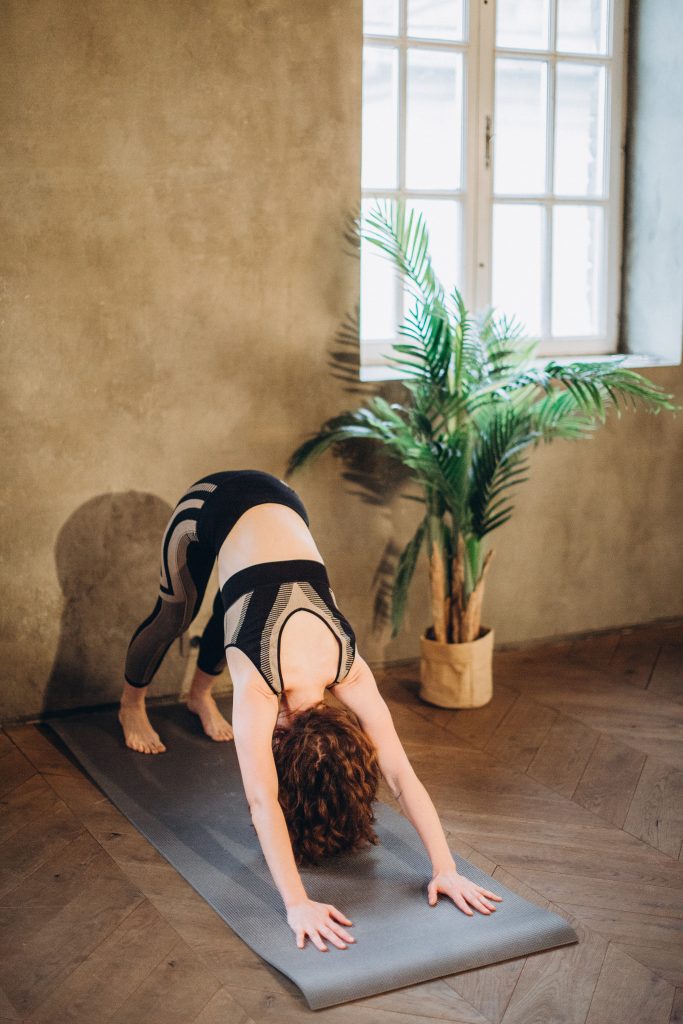
Steps of Adho Mukha Svanasana
- Begin on your hands and knees, with your hands slightly in front of your shoulders and knees directly under your hips.
- Spread your fingers wide and press your palms firmly into the mat.
- Curl your toes under and lift your knees off the ground, straightening your legs to create an inverted “V” shape with your body.
- Press through your palms and engage your arms, lifting your tailbone up towards the ceiling.
- Allow your heels to sink towards the floor, but it’s okay if they don’t touch.
- Relax your head and neck, letting them hang naturally between your arms.
- Take slow, deep breaths, focusing on lengthening your spine and pressing your chest towards your thighs.
- Hold the pose for 1-2 minutes, feeling the stretch in your hamstrings, calves, and shoulders.
- To release, bend your knees and lower them back down to the mat, returning to the hands and knees position.
Benefits of Downward Facing Dog Pose (Adho Mukha Svanasana)
- Enhancing memory and concentration by increasing blood flow to the brain
- Improving bone density and promoting skeletal health
- Stretching the hamstrings, calves, and shoulders
- Energising the body and promoting a sense of alertness
By practising these specific yoga poses for perimenopause, you can experience the physical, mental, and emotional benefits they offer, supporting your overall well-being during this transformative phase of life.
Also Check – Weight Gain in Perimenopause – Strategies for Manage Metabolic Changes
Safety Considerations and Modifications
When practicing yoga during perimenopause, it’s important to prioritize your safety and listen to your body’s needs. Here are some key considerations and modifications to keep in mind-
- Consult with a healthcare professional- Before starting a new yoga practice or any exercise routine, it’s advisable to consult with your healthcare provider, especially if you have any underlying health conditions or concerns. They can provide personalized guidance and ensure that yoga is suitable for your specific situation.
- Honor your body’s limitations- As your body goes through changes during perimenopause, it’s essential to be mindful of any physical limitations or discomfort. Respect your body’s boundaries and avoid pushing yourself beyond what feels comfortable or causes pain. Modify poses as needed by using props, such as yoga blocks or straps, to support your practice and prevent strain or injury.
- Modify for joint sensitivity- Joint sensitivity may increase during perimenopause due to hormonal changes. If you experience discomfort in your wrists, knees, or other joints, adapt poses by using modifications that put less pressure on these areas. For example, in poses like Plank or Chaturanga, you can modify by lowering your knees to the mat or practicing the pose against a wall for support.
- Be mindful of balance and stability- Hormonal changes can sometimes affect balance and stability. Take extra caution during standing poses and transitions to ensure you feel secure and supported. Consider practicing near a wall or using a chair for balance if needed. Focus on maintaining a steady breath and a strong connection to the ground through your feet to enhance stability.
Research and Evidence on Yoga for Perimenopause
Several studies have shed light on the benefits of yoga for women during perimenopause. While individual experiences may vary, research suggests the following-
- Improved quality of life- Studies have shown that women who practice yoga during perimenopause report an overall improvement in their quality of life. This includes enhanced physical well-being, reduced symptom severity, and improved emotional and psychological balance.
- Symptom management- Yoga has been found to be effective in managing perimenopausal symptoms such as hot flashes, night sweats, mood swings, and sleep disturbances. Regular yoga practice can help regulate hormonal fluctuations and alleviate the intensity and frequency of these symptoms.
- Stress reduction and mental well-being– Yoga’s combination of physical movement, breathwork, and mindfulness promotes relaxation, reduces stress levels, and enhances mental well-being. This can be particularly beneficial during the emotional ups and downs often experienced during perimenopause.
- Hormonal balance- While further research is needed, preliminary studies suggest that yoga may support hormonal balance during perimenopause. Regular practice has shown positive effects on hormone levels and may help alleviate hormonal imbalances that contribute to perimenopausal symptoms.
It’s important to note that individual responses to yoga may vary, and what works for one person may not work the same for another. However, the growing body of research supports the potential benefits of yoga for women during perimenopause, making it a promising complementary approach to managing this transitional phase
In conclusion, yoga has immense potential as a supportive practise for women in the transitional phase of perimenopause. By incorporating yoga into your daily routine, you can tap into its remarkable benefits, both physically and mentally. From balancing hormones and reducing symptoms to promoting relaxation, stress relief and improved sleep, yoga offers a holistic approach to women’s health. The inclusion of mindfulness and breathwork further enhances the practise, allowing you to cultivate presence, serenity and resilience in the face of adversity. With research proving the positive effects of yoga on perimenopause, it’s time to step onto the mat and embark on a journey of self-care and empowerment. Let yoga be your companion on this transformative journey that will lead you to greater well-being and a renewed sense of vitality.
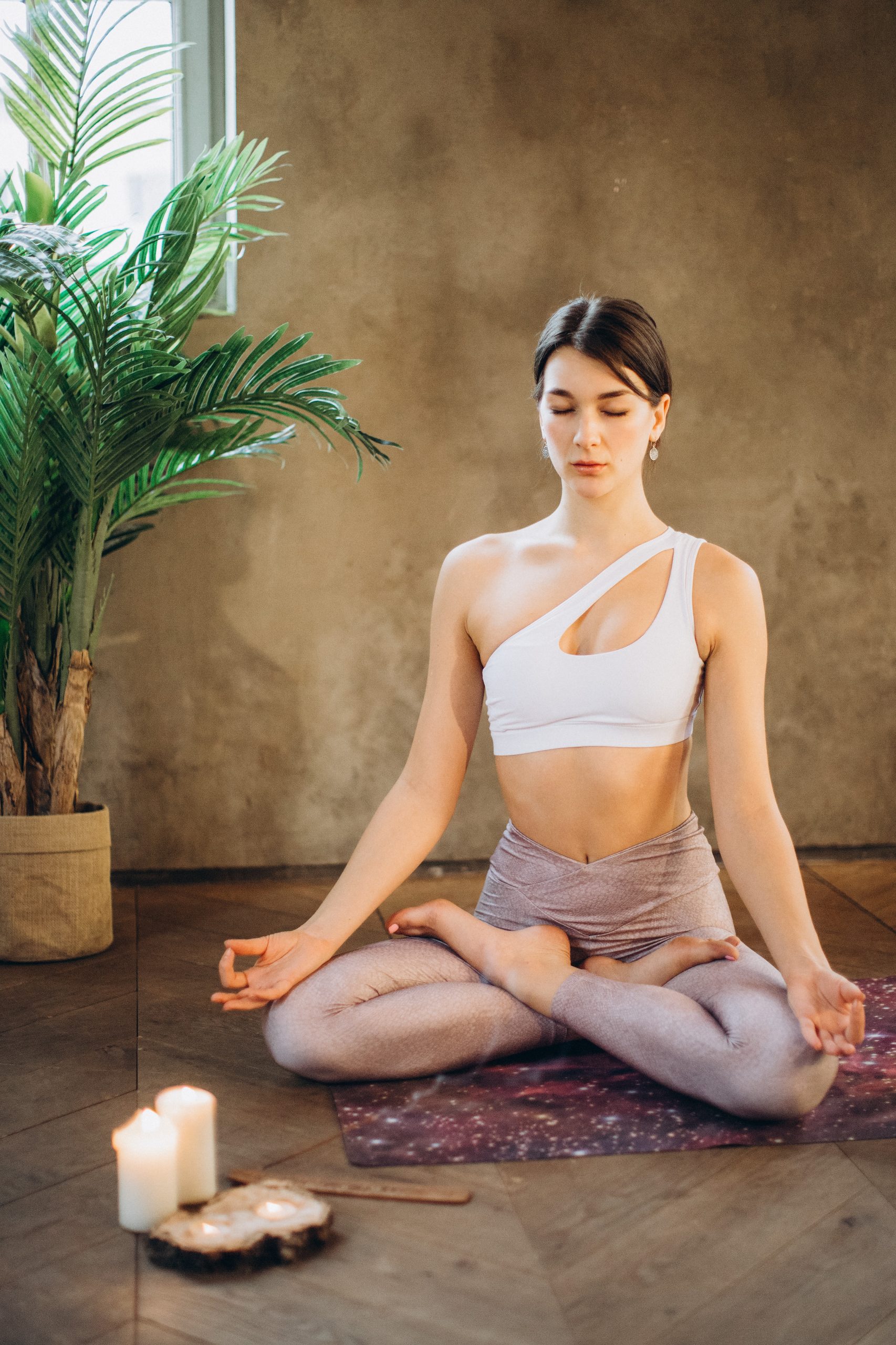
Leave a Reply